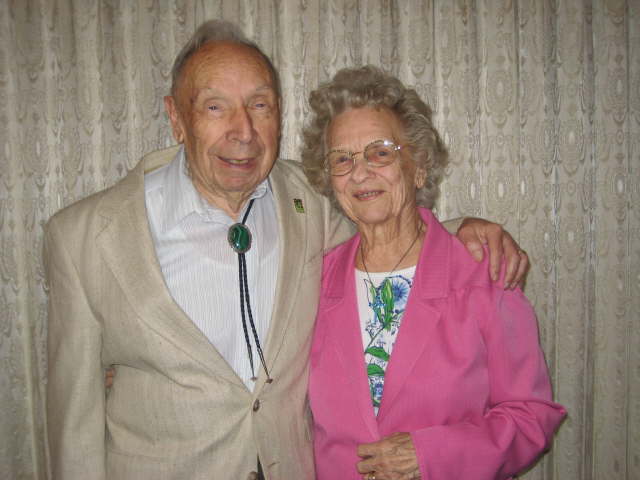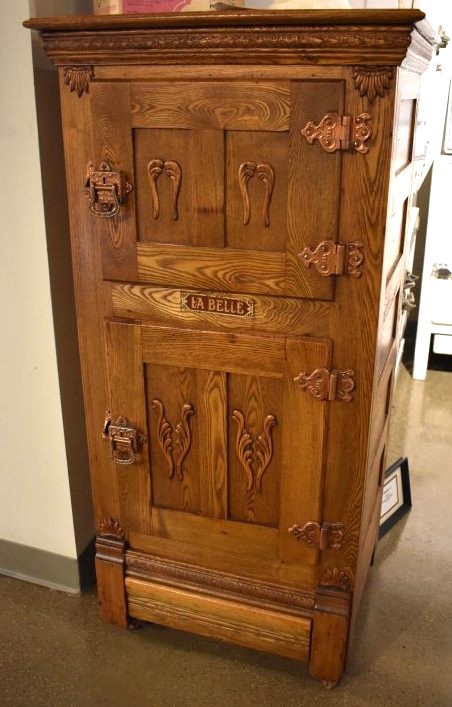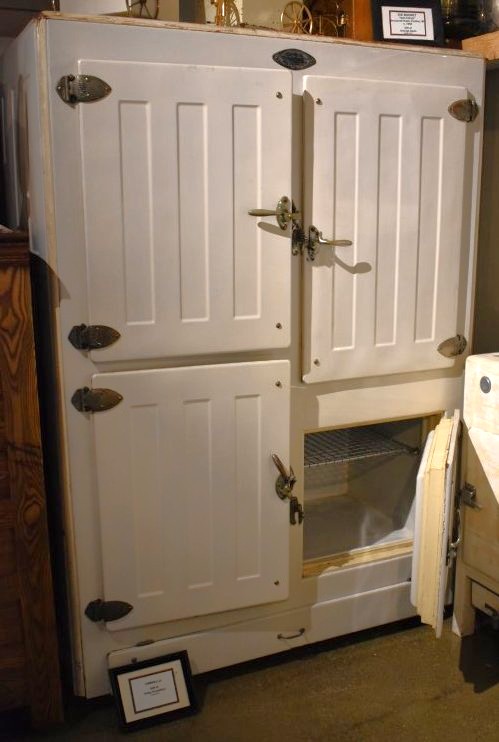By Laura Fitzgerald
Mickey and Agnes Knowlton made an enormous impact in the Port Huron area through dairy delivery and their ice businesses- industries gone by. Lucky for our community, they preserved artifacts from that point in history— honoring the everyday people and stories that shaped our community.

“The Knowlton Collection captures a time when ice was carved from our rivers and milk was delivered to your doorstep. At the Community Foundation, we see it as both a privilege and a responsibility to preserve the treasure trove of artifacts gifted by the Knowlton family that tells the rich, often overlooked story of Port Huron’s ice and dairy industries,” said Patti Manley, Community Foundation Board Chair.
This story is part of a four-part series that does a deeper dive into collection items.
Preserving a Little-Known Slice of Port Huron History
Port Huron was once home to a booming ice industry at the turn of the nineteenth- and twentieth centuries. Ice harvested from the Black River and local waterways was stored, packaged and shipped from dozens of ice houses that lined the riverbanks.
Ice was a crucial method of food preservation before the invention of modern refrigeration. Homes and businesses depended on large ice boxes and blocks of ice that were delivered via horse-drawn wagons and later motorized vehicles.
The ice box that was a staple in home kitchens and restaurants was invented sometime between 1850 and 1860 and remained in production until modern refrigeration became widely available in the 1940s.
These ice boxes usually had a compartment for food storage, a separate compartment to hold ice, and a drain in the ice compartment to catch water as it melted. The ice boxes were usually hardwood cupboards with inner linings made of tin or zinc and insulated with materials such as cork, sawdust, rice husks, straw or seaweed.

Knowlton Museum Inventory Project Co-Lead Shelly David said the Knowlton collection has around 45 ice boxes in a wide variety of styles, from basic one-compartment boxes to elaborate industrial-sized boxes that were used in stores.
The collection includes three commercial pieces from ice boxes and refrigerators. David said one of those pieces is a beautiful roll top refrigerator with a framed note dated September 17, 1995, stating it came from an unnamed store on Dove Road.
Mickey Knowlton Founds Twin Pines Dairy
Mickey Knowlton got his start in business as a home delivery milkman following his service in the Merchant Marines in World War II. He worked for Gannon’s Dairy, Wurzel Dairy Farms, and Westside Dairy, before starting his own employee-owned, Detroit-based distributorship, Twin Pines Dairy.
In mid-twentieth century America, most families didn’t have reliable transportation to regularly drive to grocery stores and so depended on grocery deliveries from companies such as Twin Pines.
In the 1950s, after successfully fighting a city ordinance that required a higher inspection fee for dairy businesses operating more than five miles from City Hall, Mickey expanded his business in the area to include five routes, multiple delivery trucks, and more drivers.
At Twin Pines Dairy, home delivery and pick-up drivers owned their own delivery trucks. Pick-up drivers were responsible for picking up full cans of milk at each dairy farm and dropping off empty bottles to be refilled. The driver then transported the milk to the processing plant, where the bottles were cleaned and returned to the driver.
Eventually, individual milk cans were replaced by refrigerated milk tankers, which made the backbreaking work of loading and unloading easier for the drivers.
Most customers had a standing delivery order, but they could alter their order by speaking to the driver or by leaving a note on the returned milk bottles.
Clowning Around: Twin Pines Hosts a TV Show
Twin Pines was so successful that in 1950 they sponsored their own children’s television show, “Milky’s Party Time” featuring “Milky the Clown,” played by Clare Cummings. It began as a two-hour show with Milky’s tricks, old cartoons, and an occasional old western, filmed in front of a live audience of children.
As the show grew, it added features, films, and games. Whenever Milky performed a trick, he used Twin Pines as the magic word instead of “abracadabra” to promote his sponsor.

The TV show was so popular there was a two-year wait for tickets. In 1964, Cummings retired and handed the role to his friend, Karrell Fox, until the show folded in 1967.
“Mickey had some Milky memorabilia in the collection, and those were favorites of visitors to the museum,” David said. “They all remembered Milky!”
Knowlton Collection Nostalgic for Museum Visitors
The Knowlton Collection contains a large number of artifacts from local dairies, the largest of which came from London Dairy in Port Huron. The collection contains more than 1,200 dairy bottles in a variety of shapes and sizes from around the world, David said.
The collection contains a Twin Pines Divco delivery truck. Divco was a Detroit-based manufacturer that produced trucks marketed toward multi-stop delivery services.
Also in the collection is a large scrapbook with Twin Pines memorabilia from 1940 to the 2000s. It’s 51 pages filled with advertising slips, photographs, price lists, news clippings, and receipts.
While the collection has been lovingly preserved in storage for the last two years, the Foundation plans to re-open a more interactive version of the ice museum in the next couple years.
“The Twin Pines artifacts were another favorite of visitors to the museum, they either remembered the days when milk was delivered to their own homes, or had heard about it from their grandparents,” David said. “The nostalgia is what brought many people back to the museum for repeat visits!”
The Knowlton Museum Inventory Project Co-Leads were Emily Reitzel and David, who received master’s degrees in Library and Information Science from Wayne State University. This is where they learned how to describe, research and preserve historical objects, papers, and photographs for display in museums and libraries. They led the inventory of the entire Knowlton Museum collection.
Learn more about the Knowlton Museum here.
